What you need to do is have a range of dates (ie, 1 row per date). This can be done a few ways. Probably the most efficient is having a calendar table, but if you cannot add new tables that is not possible.
You can have a table of numbers and add that to the starting date of each row, but again this requires a new table.
As such the option is to have a set of unioned queries to generate a range of numbers. For example the following will return 10 rows with the numbers 0 to 9:-
SELECT 0 a UNION SELECT 1 UNION SELECT 2 UNION SELECT 3 UNION SELECT 4 UNION SELECT 5 UNION SELECT 6 UNION SELECT 7 UNION SELECT 8 UNION SELECT 9
You can cross join such sub queries against each other to generate a larger range of numbers, and add that to your start date where the results is less than of equal to the end date:-
SELECT id, start_date, end_date, price_per_day, DATE_ADD(start_date, INTERVAL (units.a + tens.a * 10 + hundreds.a * 100) DAY) AS aDay
FROM pricing
CROSS JOIN (SELECT 0 a UNION SELECT 1 UNION SELECT 2 UNION SELECT 3 UNION SELECT 4 UNION SELECT 5 UNION SELECT 6 UNION SELECT 7 UNION SELECT 8 UNION SELECT 9) units
CROSS JOIN (SELECT 0 a UNION SELECT 1 UNION SELECT 2 UNION SELECT 3 UNION SELECT 4 UNION SELECT 5 UNION SELECT 6 UNION SELECT 7 UNION SELECT 8 UNION SELECT 9) tens
CROSS JOIN (SELECT 0 a UNION SELECT 1 UNION SELECT 2 UNION SELECT 3 UNION SELECT 4 UNION SELECT 5 UNION SELECT 6 UNION SELECT 7 UNION SELECT 8 UNION SELECT 9) hundreds
WHERE DATE_ADD(start_date, INTERVAL (units.a + tens.a * 10 + hundreds.a * 100) DAY) <= end_date
The above will cope with up to 1000 days between the dates. Easy to expand to cope with 10000 days or more, but will become slower.
You can then just use that as a sub query when checking the date range you are interested in:-
SELECT aDay, price_per_day
FROM
(
SELECT id, start_date, end_date, price_per_day, DATE_ADD(start_date, INTERVAL (units.a + tens.a * 10 + hundreds.a * 100) DAY) AS aDay
FROM pricing
CROSS JOIN (SELECT 0 a UNION SELECT 1 UNION SELECT 2 UNION SELECT 3 UNION SELECT 4 UNION SELECT 5 UNION SELECT 6 UNION SELECT 7 UNION SELECT 8 UNION SELECT 9) units
CROSS JOIN (SELECT 0 a UNION SELECT 1 UNION SELECT 2 UNION SELECT 3 UNION SELECT 4 UNION SELECT 5 UNION SELECT 6 UNION SELECT 7 UNION SELECT 8 UNION SELECT 9) tens
CROSS JOIN (SELECT 0 a UNION SELECT 1 UNION SELECT 2 UNION SELECT 3 UNION SELECT 4 UNION SELECT 5 UNION SELECT 6 UNION SELECT 7 UNION SELECT 8 UNION SELECT 9) hundreds
WHERE DATE_ADD(start_date, INTERVAL (units.a + tens.a * 10 + hundreds.a * 100) DAY) <= end_date
) sub0
WHERE aDay BETWEEN '2015-05-30' AND '2015-06-02'
ORDER BY aDay
